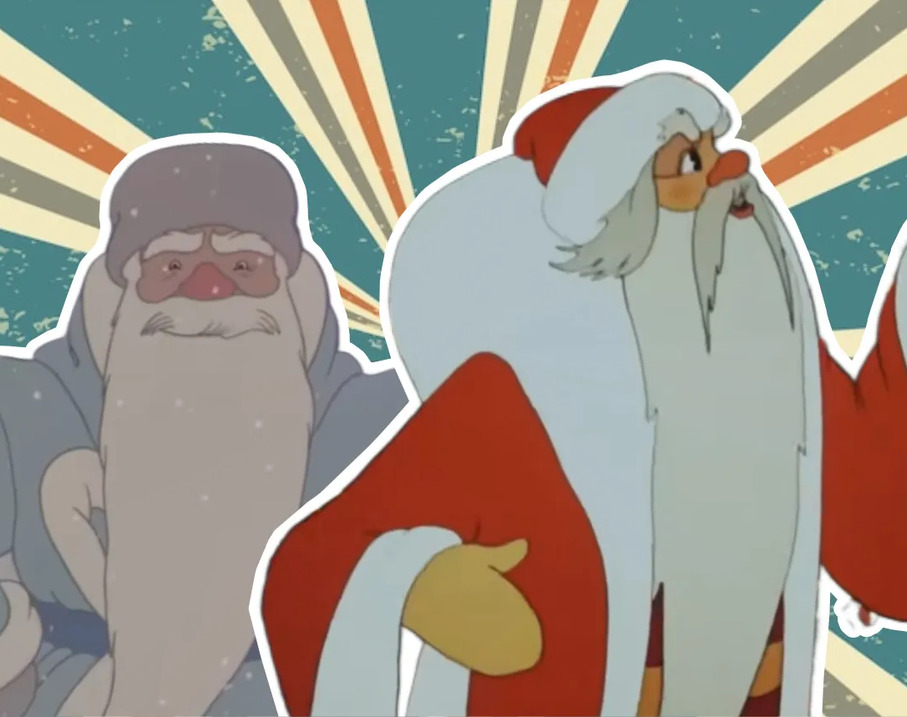
The path of Ded Moroz in Soviet animation, from his first tentative steps in the 1930s to becoming the main symbol of the New Year, has been a long one. The character's appearance, personality, and narrative role have changed over the decades, reflecting the influence of political and cultural changes in the country. How has this magical hero evolved on the screen and what has become of him in modern times?
The first attempt to depict Ded Moroz in Russian animation was in V. Starevich's film "Christmas of the Forest's Inhabitants." In this work, he appeared in a strange, almost exotic image, resembling more of a character from "Khoja Nasreddin" than the familiar winter magician. Ded Moroz was portrayed as a toy that comes down from the Christmas tree to entertain the forest animals. This experiment shows that in the early 20th century, the concept of Ded Moroz was not yet clear and defined.
A new era began in 1937 with the release of the film "Ded Moroz and the Gray Wolf." Ded Moroz became associated not only with Christmas but also with New Year's celebrations. Although the visualization of the character still had room for improvement, this film marked the first attempt to create a clearer and more traditional image of Ded Moroz. The legendary wizard gained popularity among children, but his appearance continued to undergo changes.
In the midst of war, in the film "The Christmas Tree," Ded Moroz appeared with elements borrowed from the Western figure of Santa Claus. His final form had not yet been established, and his cap with a pom-pom indicated the ongoing search by animators. However, even in difficult times, Ded Moroz began to acquire the characteristics that would later become classic: kindness and care for children.
By 1945, with the release of the film "Winter Tale," Ded Moroz's image became more structured. He was no longer just a kind magician but the master of winter elements who helps children and forest creatures in their adventures. This character already had his main traits: friendliness, fairness, and love for children, making him indispensable during New Year celebrations.
In 1948, with the release of "New Year's Eve," Ded Moroz finally established himself as the central figure of the New Year holiday. His role became even more significant, symbolizing the joy and magic of the New Year, helping children overcome difficulties and obstacles on the way to the celebration.
By the early 1950s, with the arrival of the film "When the Christmas Trees are Lit," Ded Moroz's image had fully solidified. He became a strict but kind wizard who protects children from evil characters and assists them in their New Year adventures. His bright coats - red or blue - and friendly appearance made him a vibrant and memorable character.
In 1952, the film "Snow Maiden" offered a new interpretation of Ded Moroz, who, although not the central character, still retained the key traits of his image. This highlights how different cultural elements intertwine and influence each other in Soviet animation, creating a rich context for the characters.
In "The Postman Snowman," a new important character appeared - the Snowman, who serves as Ded Moroz's helper. He brings additional comedic elements to the New Year stories and takes the place that later the Snow Maiden will occupy. Ded Moroz's image becomes more human and relatable to children, adding to his charm.
In the film "The Twelve Months," Ded Moroz does not appear, but the characters of the winter months - January, February, and December - embody the same traits: kindness, fairness, and magic. This is another example of how the image of the winter wizard permeates different plots and retains its essence, even when Ded Moroz himself is absent.
In the film "New Year's Journey," Ded Moroz participates in an unusual adventure, helping a boy deliver a Christmas tree to Antarctica. This film demonstrates how the image of Ded Moroz continues to develop and adapt to new situations, remaining a symbol of New Year's wonder.
The evolution of Ded Moroz in Soviet animation reflects the complex history and cultural changes of the country. From his first appearance as a Christmas Ded in 1912 to the formation of the classic image in the 1950s, Soviet animation made Ded Moroz the central hero of New Year's celebrations, a symbol of kindness, magic, and winter holidays. Despite experiments with his appearance, coat color, and narrative role, he always remained the embodiment of a winter fairy tale, essential for Soviet children. Ded Moroz is not just a character; he is part of the national identity and the childhood memories of several generations.

















